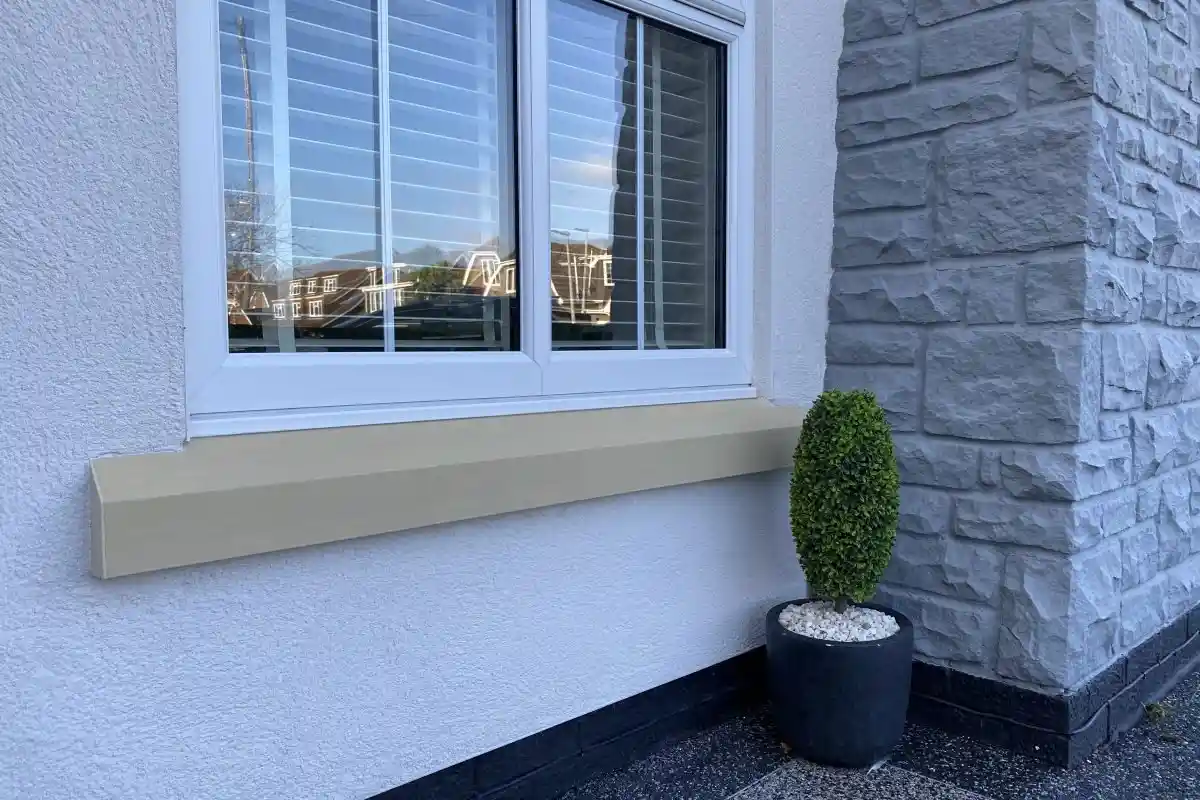A window sill can indeed be considered as part of the exterior of a building. It serves both functional and aesthetic purposes, supporting the window structure while adding character to the facade. Inside or outside, maintaining your window sill is key to preserving its integrity and enhancing the overall look of your home.
Defining a Window Sill

Window sills come in various shapes and sizes depending on the style of your windows. They can be narrow for minimalist designs or wider for a more traditional look. Some even have decorative features like moulding or trim to add flair to your windows.
Regarding their placement, interior window sills are inside the house, while exterior ones are exposed to the elements outdoors. Regardless of their location, both types play an essential role in enhancing your windows’ overall look and functionality.
Different Types of Window Sills
Depending on your style and practical needs, there are various types of window sills. One common type is the interior wood sill, which adds a warm and traditional look to any room. Another popular choice is the stone sill, known for its durability and timeless appeal.
For a more modern aesthetic, metal window sills are gaining popularity due to their sleek appearance and low maintenance requirements. Concrete sills offer a sturdy option that can be customized with different finishes to suit your decor preferences.
If you’re looking for an eco-friendly option, consider bamboo or recycled materials for your window sill. These choices add a unique touch and contribute to sustainability efforts in home design. Selecting the right type of window sill can enhance your space’s aesthetics and functionality.
Materials Used for Window Sills

Regarding window sills, the materials used play a significant role in aesthetics and functionality. One common material is wood, which offers a classic and warm look to any window frame. Wood can be painted or stained to match your home’s style.
Another popular choice is stone, such as marble or granite, which provides durability and a luxurious feel. Stone window sills are resistant to moisture and can withstand harsh weather conditions.
For a more modern touch, metal window sills like aluminium or stainless steel offer sleekness and easy maintenance. These materials are also known for their longevity and resistance to corrosion.
Synthetic materials like PVC or composite are cost-effective options that mimic the look of wood or stone while requiring minimal upkeep. They are lightweight yet durable choices for outdoor window sills.
Purpose of a Window Sill
The purpose of a window sill goes beyond just being a decorative element in your home. It is a functional component that plays an important role in the overall structure of your windows. Window sills help to divert water away from the window, preventing moisture from seeping into your home and causing damage.
Window sills provide a surface for placing plants, art pieces, or other decor items to enhance the aesthetic appeal of your space. They also act as a barrier against drafts and help to insulate the window area, improving energy efficiency in your home.
Pros and Cons of Having an Outside Window Sill
Having an outside window sill can add a touch of charm to the exterior of your home. It provides a ledge for placing potted plants and decorative items or sitting by the window. This can enhance the overall aesthetic appeal of your house.
On the flip side, having an outside window sill means it is constantly exposed to environmental elements like rain, snow, and sunlight. This exposure can lead to wear and tear over time, requiring regular maintenance and upkeep to prevent damage.
Another advantage of an outdoor window sill is its functionality in channelling water away from the windows during rainy days. This helps in preventing water damage inside your home by directing moisture outward.
One downside of having an outside window sill is that it may require more frequent cleaning due to dust accumulation from being outdoors. If not properly maintained, a deteriorating window sill could compromise your windows’ insulation and structural integrity.
Tips for Maintaining an Outside Window Sill
Maintaining an outside window sill is essential to keep your home looking its best. Regularly inspect the caulking around the edges to prevent water damage and reseal as needed. Keep the sill clean by removing dirt, debris, and any plant growth that may accumulate over time.
Repainting or refinishing the wood or metal surface of the sill to protect it from weathering elements. Ensure proper drainage by removing obstructions like leaves or branches that can impede water flow.
Regularly check for any rotting or pest infestation signs and address them promptly to avoid further damage. Take extra precautions to protect your window sill from potential harm during extreme weather conditions, such as heavy rain or snow.
By following these simple tips, you can prolong the life of your outside window sill and maintain its functionality and aesthetic appeal for years to come.




